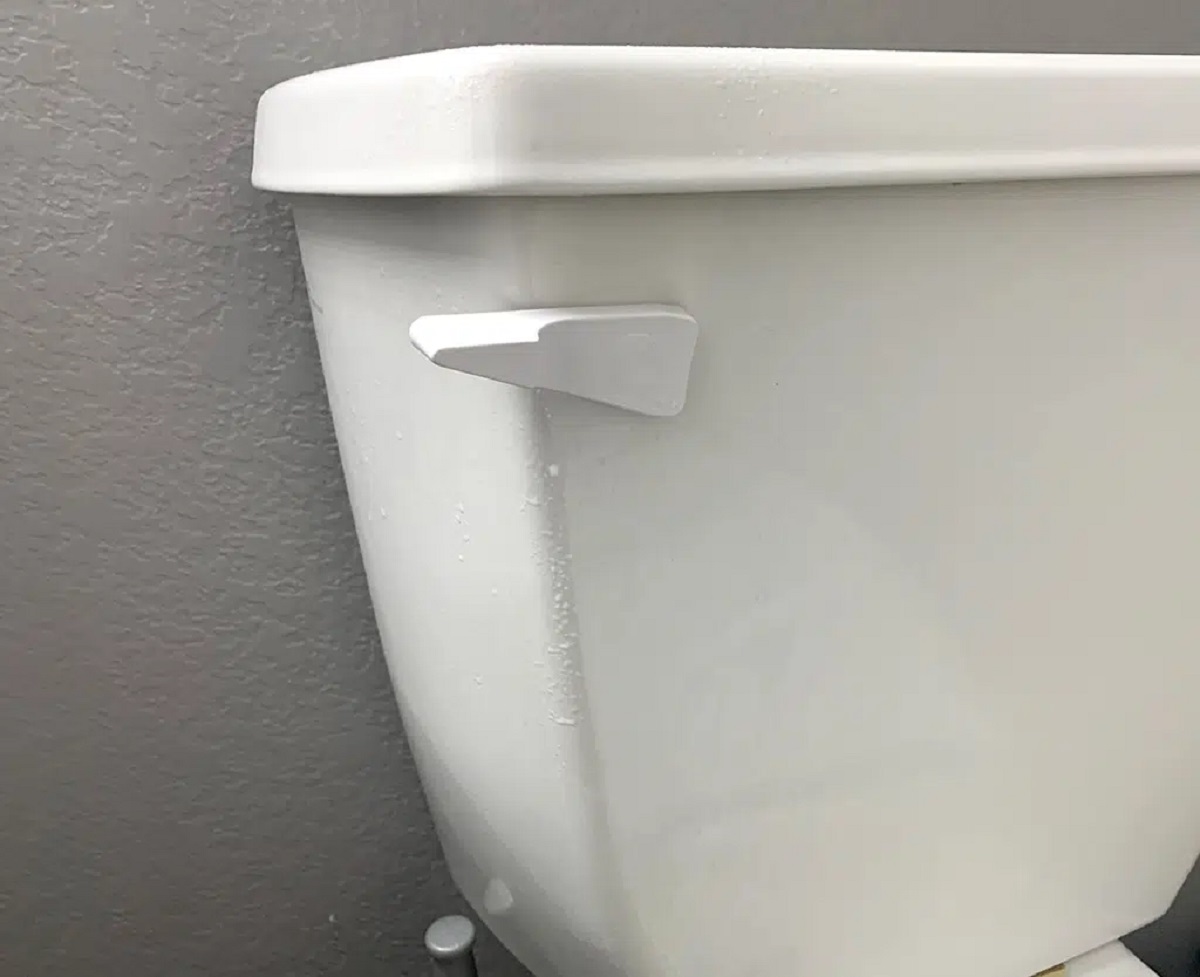

Articles
Why Is My Toilet Tank Sweating
Modified: November 1, 2024
Discover why your toilet tank is sweating and find helpful articles to solve the problem.
(Many of the links in this article redirect to a specific reviewed product. Your purchase of these products through affiliate links helps to generate commission for Storables.com, at no extra cost. Learn more)
Introduction
Have you ever noticed water droplets forming on the exterior of your toilet tank? This phenomenon, known as toilet tank sweating, can be a frustrating and perplexing problem for many homeowners. While it may seem like a harmless issue, toilet tank sweating can actually lead to water damage, mold growth, and increased energy consumption. Understanding the causes and effects of toilet tank sweating is essential in order to prevent and address this problem effectively.
In this article, we will dive deeper into the world of toilet tank sweating, exploring its causes and the potential consequences it can have on your bathroom. We will also provide practical tips on how to prevent toilet tank sweating, ensuring a dry and efficient toilet system in your home.
Key Takeaways:
- Prevent toilet tank sweating by insulating the tank, reducing humidity, adjusting room temperature, and upgrading to a high-efficiency toilet. These measures maintain a dry, efficient, and visually appealing bathroom while preventing potential water damage and mold growth.
- Understanding the causes of toilet tank sweating and implementing preventive measures can help maintain a comfortable and sustainable bathroom environment. By addressing humidity, temperature differences, and insulation, you can prevent water damage, mold growth, and increased energy consumption.
Read more: Why Put Downy In Toilet Tank
What is toilet tank sweating?
Toilet tank sweating, also known as condensation, occurs when moisture builds up on the surface of the toilet tank. This moisture causes water droplets to form, giving the appearance of the tank “sweating.” It is most commonly observed during periods of high humidity or when there is a significant temperature difference between the air in the bathroom and the water inside the tank.
This phenomenon is more common in older toilets, as they are often made from materials that are poor at insulation. The moisture that collects on the exterior of the tank is a result of the warm water inside the tank coming into contact with the cooler air in the bathroom. This temperature difference causes the water vapor in the air to condense and form droplets on the surface of the tank.
It’s important to note that toilet tank sweating is different from a leak. If you notice water pooling around the base of your toilet or a continuous flow of water into the toilet bowl, this indicates a plumbing issue and requires immediate attention.
While toilet tank sweating may seem like a minor inconvenience, it can have several negative consequences if left unaddressed. Understanding the causes of toilet tank sweating is crucial in order to effectively prevent and manage this issue.
Causes of toilet tank sweating
Several factors contribute to the occurrence of toilet tank sweating. Understanding these causes can help you take the necessary steps to prevent or address the issue. The main culprits of toilet tank sweating include humidity levels, temperature differences, insufficient tank insulation, and condensation.
Humidity levels: High humidity in the bathroom can increase the likelihood of toilet tank sweating. When the air is saturated with moisture, it has a harder time accommodating additional moisture from the warm water in the tank. This excess moisture can then condense on the cooler surfaces of the tank, causing sweating.
Temperature differences: When there is a significant difference in temperature between the water inside the tank and the air in the bathroom, it creates a prime environment for condensation. As the warm water comes into contact with the colder tank surface, the moisture in the air condenses and forms droplets.
Insufficient tank insulation: Older toilet models, in particular, may not have adequate insulation around the tank. This lack of insulation allows the cold air in the bathroom to directly contact the warm water in the tank, leading to condensation and subsequent sweating.
Condensation: Condensation is a natural process that occurs when warm air comes into contact with a cooler surface, causing the moisture in the air to convert into liquid form. In the case of toilet tank sweating, condensation takes place when the temperature difference between the water in the tank and the air in the bathroom is significant.
By understanding these causes, you can implement preventive measures to minimize or eliminate toilet tank sweating in your bathroom. In the following sections, we will explore the various effects that toilet tank sweating can have on your bathroom and how to prevent this issue from occurring.
Humidity levels
One of the key factors contributing to toilet tank sweating is the level of humidity in the bathroom. Humidity refers to the amount of moisture present in the air. When the humidity is high, it becomes more difficult for the air to accommodate additional moisture from the warm water in the toilet tank.
Excessive humidity can be caused by activities such as showering, bathing, or cooking, which release moisture into the air. Poor ventilation in the bathroom can also contribute to high humidity levels, as it prevents the moist air from dissipating. Additionally, living in a humid climate can naturally increase the overall humidity in your home.
This excess moisture in the air can lead to condensation on the surface of the toilet tank. As the warm water inside the tank comes into contact with the cooler air in the bathroom, the moisture in the air condenses and forms droplets on the tank surface. This creates the phenomenon known as toilet tank sweating.
To prevent excessive humidity in your bathroom, consider the following measures:
- Use exhaust fans: Install and use exhaust fans in your bathroom to help remove moisture from the air. Make sure the fans are functioning properly and use them during and after showers or baths.
- Open windows: If weather permits, open a window in the bathroom to allow fresh air to circulate and help reduce humidity levels.
- Use a dehumidifier: Consider using a dehumidifier specifically designed for small spaces like bathrooms. This appliance helps to remove excess moisture from the air, reducing overall humidity levels.
- Limit moisture-producing activities: Try to minimize activities that produce moisture, such as boiling water or drying clothes, in the bathroom. If possible, perform these tasks in well-ventilated areas.
By controlling the humidity levels in your bathroom, you can significantly reduce the chances of toilet tank sweating and its associated problems.
Temperature differences
Another common factor that contributes to toilet tank sweating is the presence of significant temperature differences between the water inside the tank and the air in the bathroom. When warm water is stored in the tank and the air in the bathroom is cooler, it creates an ideal environment for condensation to occur.
The temperature difference causes the moisture in the air to condense on the surface of the tank, leading to the formation of water droplets and the appearance of toilet tank sweating.
There are several reasons why temperature differences may occur in your bathroom:
- Colder ambient air: If your bathroom tends to be cooler due to factors like inadequate insulation, lack of heat circulation, or drafts, the temperature difference between the water in the tank and the air in the bathroom will be more pronounced.
- Cool water supply: In some cases, cold water supplied to the toilet tank can cause a significant temperature difference. This can be particularly noticeable during colder seasons or in areas with colder water sources.
- Rapid temperature changes: Fluctuations in temperature, such as when turning on or flushing the toilet, can contribute to temperature differences and subsequent toilet tank sweating.
To address temperature differences and reduce toilet tank sweating, consider the following measures:
- Improve bathroom insulation: Enhance the insulation in your bathroom by adding weatherstripping to windows and doors, installing insulation in walls, and ensuring proper insulation around plumbing pipes.
- Add tank insulation: Add insulation specifically designed for toilet tanks. This can be in the form of a tank liner or foam insulation that helps to reduce temperature differences and minimize condensation.
- Adjust bathroom temperatures: Keep the bathroom temperature consistent and comfortable. If needed, adjust the thermostat or use portable heaters to regulate the air temperature in the bathroom.
By addressing temperature differences, you can effectively reduce toilet tank sweating and maintain a more comfortable and dry bathroom environment.
Read more: Why Do Candles Sweat
Insufficient tank insulation
Insufficient tank insulation is a significant contributor to toilet tank sweating. Older toilet models, in particular, may not have adequate insulation around the tank, making them more prone to temperature differences and condensation.
When the tank lacks proper insulation, the cold air in the bathroom comes into direct contact with the warm water inside the tank. This temperature difference causes moisture in the air to condense on the surface of the tank, leading to toilet tank sweating.
To address insufficient tank insulation and prevent toilet tank sweating, consider the following solutions:
- Add a tank liner: Install a tank liner on the inside of the toilet tank. A tank liner acts as a barrier between the cold tank surface and the warm water, helping to minimize temperature differences and reduce condensation.
By addressing insufficient tank insulation, you can significantly reduce or even eliminate toilet tank sweating in your bathroom, creating a more comfortable and efficient toilet system.
Condensation
Condensation is a natural process that occurs when warm air comes into contact with a cooler surface. When it comes to toilet tank sweating, condensation is the primary mechanism responsible for the formation of water droplets on the surface of the tank.
Condensation occurs when there is a significant temperature difference between the water inside the toilet tank and the atmosphere in the bathroom. The warm water stored in the tank releases moisture vapor into the air. When this warm, moist air makes contact with the cooler surface of the tank, it cools down rapidly, causing the moisture to condense and form droplets.
This condensation process is similar to what happens when you pour a cold beverage into a glass on a hot day and see water droplets form on the outside of the glass. The temperature difference between the cold liquid and the warm air causes moisture in the air to condense on the glass surface.
Toilet tank sweating due to condensation can be exacerbated by factors such as high humidity levels in the bathroom, inadequate insulation, and temperature fluctuations.
To address condensation and prevent toilet tank sweating, consider the following measures:
- Insulate the tank: Enhance the insulation of the toilet tank by adding a tank liner or foam insulation. This helps to minimize the temperature difference between the water and the air, reducing condensation.
- Reduce humidity levels: Use exhaust fans, open windows, or utilize a dehumidifier to remove excess moisture from the bathroom, reducing overall humidity levels and minimizing the likelihood of condensation.
- Adjust room temperature: Maintain a consistent and comfortable temperature in the bathroom to reduce temperature differences and minimize condensation. Consider using portable heaters or adjusting the thermostat as needed.
By understanding the process of condensation and implementing preventive measures, you can effectively manage and prevent toilet tank sweating in your bathroom.
Effects of toilet tank sweating
Toilet tank sweating may seem like a minor inconvenience, but if left unaddressed, it can have several negative consequences. Understanding the effects of toilet tank sweating is crucial in order to take appropriate measures to prevent and mitigate these issues.
Here are some potential effects of toilet tank sweating:
- Water damage: The moisture from toilet tank sweating can accumulate on the floor around the toilet, potentially causing water damage. Over time, this can lead to rotting floorboards, mold growth, and even structural damage if left untreated.
- Mold and mildew growth: Excessive moisture from toilet tank sweating creates a perfect breeding ground for mold and mildew. These can not only cause an unpleasant smell but also trigger allergies and respiratory issues in some individuals.
- Increased energy consumption: When toilet tank sweating occurs, it indicates a significant temperature difference between the water in the tank and the ambient air. In an attempt to regulate the temperature, your HVAC system may work harder, resulting in increased energy consumption and higher utility bills.
- Unpleasant aesthetics: Water droplets forming on the exterior of the toilet tank can create an unsightly appearance in your bathroom. It may also lead to mineral deposits and stains on the toilet, requiring frequent cleaning and maintenance.
It’s important to address toilet tank sweating to prevent these effects from occurring. By taking proactive steps to reduce humidity levels, minimize temperature differences, and improve insulation, you can mitigate the negative consequences of toilet tank sweating and maintain a dry, efficient, and visually appealing bathroom.
Water damage
One of the significant effects of toilet tank sweating is the potential for water damage. The moisture that accumulates on the exterior of the toilet tank can seep into the surrounding floor and cause various issues if left unchecked.
Water damage from toilet tank sweating can lead to several problems:
- Rotting floorboards: Continuous exposure to moisture can cause the wooden floorboards around the toilet to rot over time. This not only compromises the structural integrity of the floor but also requires expensive repairs or replacement.
- Mold and mildew growth: Excess moisture from toilet tank sweating creates ideal conditions for mold and mildew to thrive. These fungi can grow on walls, floors, and other surfaces, leading to not only a damp and musty smell but also potential health hazards as mold spores can trigger allergies and respiratory issues.
- Staining and discoloration: If the water droplets from toilet tank sweating contain minerals, they can leave unsightly stains on the floor or other surfaces. These stains are not only unattractive but can also be challenging to remove without professional assistance.
- Structural damage: Prolonged water damage from toilet tank sweating can compromise the structural integrity of your bathroom. Water seeping into walls or other structural elements can cause them to weaken, warp, or even collapse if not properly addressed.
To prevent water damage from toilet tank sweating, it is essential to take proactive measures:
- Address the underlying cause: Identify and address the root cause of toilet tank sweating, such as high humidity levels or temperature differences, to reduce the amount of moisture that collects on the tank surface.
- Regularly inspect and clean: Regularly inspect the area around the toilet for any signs of water damage or mold growth. Promptly clean up any water pooling or moisture to prevent further damage.
- Improve ventilation: Ensure proper ventilation in your bathroom by using exhaust fans, opening windows, or installing a ventilation system. Adequate airflow helps to dry out any moisture and prevent water damage.
- Utilize water-resistant materials: Consider using water-resistant materials, such as tile or waterproof flooring, in the bathroom to minimize the risk of water damage in case of toilet tank sweating or other water-related incidents.
By addressing toilet tank sweating and taking preventive measures, you can reduce the risk of water damage, protecting your bathroom from costly repairs and maintaining a safe and dry environment.
To prevent toilet tank sweating, consider insulating the tank with a foam liner or using a tank condensation kit. This can help reduce the temperature difference between the tank and the surrounding air, minimizing condensation.
Read more: Why Is The Grass Over My Septic Tank Dead
Mold and mildew growth
Mold and mildew growth is a common consequence of toilet tank sweating. The excess moisture created by the condensation on the surface of the toilet tank provides a favorable environment for mold and mildew to thrive. These fungal organisms can cause numerous problems, both aesthetically and health-wise.
Here are some of the effects of mold and mildew growth:
- Unpleasant odor: Mold and mildew emit a characteristic musty odor that can permeate the atmosphere of your bathroom. This unpleasant smell can be persistent and difficult to eliminate without addressing the underlying cause.
- Allergies and respiratory issues: Mold spores can trigger allergies and respiratory problems, particularly in individuals who have pre-existing conditions such as asthma or allergies. Exposure to mold can lead to symptoms like coughing, sneezing, wheezing, and itchy or watery eyes.
- Deterioration of surfaces: Mold and mildew can cause visible damage to surfaces, including walls, grout, and even the ceiling. They can cause discoloration, staining, and deterioration of the affected areas, which may require costly repairs or renovations.
- Health hazards: Prolonged exposure to mold and mildew can have more severe health effects, especially for individuals with compromised immune systems. In some cases, it can lead to serious respiratory infections and other health complications.
To prevent mold and mildew growth resulting from toilet tank sweating, consider the following measures:
- Reduce humidity: Use exhaust fans or open windows during and after showering or bathing to minimize excess moisture in the bathroom. This helps reduce the humidity level and discourage mold and mildew growth.
- Clean regularly: Regularly clean your bathroom, including the toilet tank and surrounding areas, to remove any existing mold or mildew. Use appropriate cleaning products and techniques to effectively eliminate the fungi and prevent future growth.
- Improve ventilation: Ensure proper ventilation in your bathroom by using exhaust fans, opening windows, or installing a ventilation system. Good airflow helps to dry out any moisture and prevent the buildup of mold and mildew.
- Maintain dry surfaces: Wipe down the toilet tank and other surfaces to keep them dry. Additionally, consider using materials that are resistant to mold and mildew, such as mold-resistant paint or tiles, in your bathroom.
By taking proactive steps to prevent mold and mildew growth, you can maintain a clean and healthy bathroom environment, reducing the potential health risks associated with these fungal organisms.
Increased energy consumption
One often overlooked effect of toilet tank sweating is the potential increase in energy consumption. When toilet tank sweating occurs, it indicates a significant temperature difference between the water inside the tank and the ambient air in the bathroom. This temperature difference can cause your HVAC system to work harder to regulate the temperature, leading to increased energy usage and higher utility bills.
Here are some ways in which toilet tank sweating can contribute to increased energy consumption:
- Heating and cooling demands: The temperature difference caused by toilet tank sweating may prompt your heating or cooling system to run more frequently or for longer durations. The system needs to compensate for the heat loss or gain resulting from the temperature difference, leading to increased energy consumption.
- HVAC efficiency: A constant temperature difference caused by toilet tank sweating forces your HVAC system to work harder to maintain the desired temperature in the bathroom. This excessive workload can lead to reduced efficiency and increased energy consumption.
- Overall energy usage: The HVAC system is not the only component affected by the increased temperature difference due to toilet tank sweating. Other appliances that rely on temperature control, such as water heaters or radiant floor heating, may also be affected. This can further contribute to increased energy consumption throughout your home.
To mitigate the impact of toilet tank sweating on energy consumption, consider implementing the following measures:
- Improve insulation: Enhance the insulation of your toilet tank by adding a liner or foam insulation. This helps to minimize heat transfer and maintain a more consistent temperature, reducing the temperature difference and the workload on your HVAC system.
- Adjust room temperature: Maintain a moderate and comfortable temperature in your bathroom, avoiding extreme temperature fluctuations. This helps reduce the need for your HVAC system to work excessively, leading to energy savings.
- Upgrade to energy-efficient appliances: Consider upgrading to energy-efficient toilets, HVAC systems, and other bathroom appliances. Energy-efficient models are designed to minimize energy usage while still providing optimal performance.
- Regular HVAC maintenance: Schedule regular maintenance for your HVAC system to ensure it operates efficiently. This includes cleaning or replacing air filters, checking for leaks, and ensuring proper airflow.
By taking steps to reduce energy consumption resulting from toilet tank sweating, you can not only save on your utility bills but also contribute to a more environmentally friendly home.
How to prevent toilet tank sweating
Toilet tank sweating can be a frustrating issue, but there are several measures you can take to prevent or minimize its occurrence. By addressing the underlying causes and implementing preventive measures, you can maintain a dry and efficient toilet system in your home. Here are some effective strategies to prevent toilet tank sweating:
- Insulate the tank: Enhance the insulation of your toilet tank by adding a tank liner or foam insulation. Insulation helps to minimize temperature differences between the water inside the tank and the ambient air in the bathroom, reducing the chances of condensation and sweating.
- Use a tank liner: Install a tank liner specifically designed to prevent toilet tank sweating. These liners act as a barrier, reducing the contact between the cold tank surface and the warm water inside, and helping to regulate temperature and minimize condensation.
- Reduce humidity levels: To minimize the potential for condensation, reduce humidity levels in your bathroom. Use exhaust fans, open windows, or utilize a dehumidifier to remove excess moisture from the air. This creates a drier environment and reduces the likelihood of toilet tank sweating.
- Adjust the room temperature: Maintain a consistent and moderate temperature in your bathroom to reduce temperature differences and minimize condensation. Avoid extreme temperature fluctuations that can contribute to toilet tank sweating.
- Upgrade to a high-efficiency toilet: Consider replacing your older toilet with a high-efficiency model. These toilets are designed to use less water and may produce less temperature variations, helping to reduce the occurrence of toilet tank sweating.
- Regular maintenance: Keep your toilet and its components in good condition through regular maintenance. Check for leaks, ensure proper flushing mechanisms, and address any issues promptly to prevent potential water buildup and condensation.
By implementing these preventive measures, you can significantly reduce or even eliminate toilet tank sweating in your bathroom. This helps to maintain a dry, visually appealing, and energy-efficient toilet system, while also preventing potential water damage and mold growth.
Insulate the tank
One effective method to prevent toilet tank sweating is by insulating the tank itself. By adding insulation, you create a barrier between the cool ambient air and the warm water inside the tank, reducing the temperature difference and minimizing condensation. Here’s how you can insulate the tank:
1. Tank liner: One option is to install a tank liner. A tank liner is a plastic or foam lining that attaches to the inner walls of the toilet tank. It acts as an insulating barrier, reducing heat transfer and preventing the tank from coming into direct contact with the surrounding air. Tank liners are available in different sizes and can be easily installed with adhesive or hooks.
2. Foam insulation: Another method is to apply foam insulation to the exterior of the toilet tank. Foam insulation comes in the form of sheets or rolls that can be cut to size and securely attached to the tank surface. This additional layer of insulation helps to regulate the temperature inside the tank and minimize condensation.
3. Insulating blankets: Insulating blankets are specifically designed for toilet tanks and provide an extra layer of insulation. These pre-cut blankets are made of insulating materials such as fiberglass or foam and can be wrapped around the tank. The blankets help to maintain a consistent temperature inside the tank, reducing the formation of condensation.
When insulating the toilet tank, make sure to follow the manufacturer’s instructions and consider the following tips:
- Ensure proper fit: Whether using a tank liner, foam insulation, or an insulating blanket, ensure that it fits securely and covers the entire surface of the tank. This helps to maximize the insulating effect and prevent any gaps where condensation can occur.
- Avoid blocking mechanisms: When installing insulation, ensure that it does not interfere with the flushing mechanism or any other components inside the tank. Insulation should not impede the proper functioning of the toilet.
- Regular inspection and cleaning: Periodically check the condition of the insulation and clean the tank as needed. Remove any buildup of dirt, debris, or mold that may affect the effectiveness of the insulation or contribute to toilet tank sweating.
By insulating the toilet tank, you create a thermal barrier that helps regulate temperature and minimize condensation. This reduces the likelihood of toilet tank sweating and enhances the overall efficiency and performance of your toilet system.
Read more: Why Is My Toilet Bowl Yellow
Use a tank liner
Using a tank liner is a practical and effective solution to prevent toilet tank sweating. A tank liner is a specially designed barrier that is installed inside the toilet tank to reduce condensation and temperature differences. Here’s how you can use a tank liner to prevent toilet tank sweating:
1. Select the right tank liner: Choose a tank liner that is compatible with your toilet model. Tank liners come in various sizes and shapes to fit different tank configurations. Measure the dimensions of your tank and select a liner that matches those specifications.
2. Prepare the tank: Before installing the tank liner, ensure that the tank is clean and dry. Remove any debris, mineral deposits, or mold that may be present on the tank surface. Cleaning the tank will ensure better adherence of the liner and prevent any potential issues in the future.
3. Install the tank liner: Follow the manufacturer’s instructions for installing the tank liner. In most cases, the liner will have an adhesive backing or hooks that securely attach to the walls of the tank. Carefully place the liner inside the tank, ensuring a snug fit without interfering with the flushing mechanism or other components.
4. Smooth out the liner: Once the tank liner is installed, smooth out any wrinkles or air bubbles. This will ensure that the liner adheres properly to the tank walls and provides effective insulation. Smooth out the liner using your hands or a clean cloth, ensuring a seamless fit.
5. Test the functionality: After installing the tank liner, test the functionality of the toilet to ensure that it flushes properly and without any obstructions. Check that all components inside the tank are functioning as intended and there are no leaks or issues arising from the installation of the tank liner.
Using a tank liner provides an extra layer of insulation, reducing the contact between the cold tank surface and the warm water inside. This helps to minimize temperature differences and prevent condensation, effectively preventing toilet tank sweating. Additionally, tank liners can also help to minimize corrosion and increase the lifespan of the toilet tank.
Regular inspection and maintenance of the tank liner are important to ensure its effectiveness. Check for any signs of wear, damage, or detachment, and clean the liner periodically to remove any accumulated debris or mineral deposits. Proper care and maintenance will help maintain the functionality of the tank liner and prolong its lifespan.
By using a tank liner, you can effectively prevent toilet tank sweating and maintain a dry, efficient, and visually appealing toilet system in your bathroom.
Reduce humidity levels
Reducing humidity levels in your bathroom is an essential step in preventing toilet tank sweating. By controlling the amount of moisture in the air, you can minimize the potential for condensation and the formation of water droplets on the surface of the tank. Here are some effective ways to reduce humidity levels:
1. Use exhaust fans: Install and use exhaust fans in your bathroom to help remove moisture from the air. Turn on the exhaust fan during and after showers or baths to draw out humid air and replace it with fresh, drier air from outside. Ensure that the exhaust fan is properly sized for your bathroom to effectively remove moisture.
2. Open windows: If weather permits, open a window in the bathroom to promote airflow and allow humid air to escape. Cross ventilation between an open window and the bathroom door can help to reduce humidity levels and prevent moisture buildup.
3. Use a dehumidifier: Consider using a dehumidifier specifically designed for small spaces like bathrooms. These devices help to remove excess moisture from the air, reducing overall humidity levels. Place the dehumidifier in a centralized location in your bathroom or near the toilet to effectively target the areas prone to higher humidity.
4. Limit moisture-producing activities: Minimize activities that produce moisture in the bathroom, such as boiling water or drying clothes. If possible, perform these tasks in well-ventilated areas or away from the bathroom to prevent moisture from accumulating in the air.
5. Fix leaks and address plumbing issues: Leaky pipes or faucets can contribute to increased humidity levels in the bathroom. Regularly check for and promptly address any leaks or plumbing issues to prevent excess moisture from entering the air.
6. Use a squeegee: After bathing or showering, use a squeegee to remove water droplets from the walls and surfaces. This helps to prevent moisture buildup and reduces the overall humidity level in the bathroom.
7. Hang towels and wet clothes outside the bathroom: Hanging wet towels or clothes inside the bathroom can increase humidity levels. Instead, hang them outside the bathroom or in a well-ventilated area to prevent excessive moisture from being introduced into the air.
By reducing humidity levels in your bathroom, you can effectively minimize the chances of toilet tank sweating. This helps to create a drier environment, reduce condensation, and maintain the efficiency and longevity of your toilet system.
Adjust the room temperature
Adjusting the room temperature in your bathroom is a practical and effective way to prevent or minimize toilet tank sweating. By maintaining a consistent and moderate temperature, you can reduce the temperature difference between the water inside the tank and the ambient air, thus reducing the likelihood of condensation. Here are some tips for adjusting the room temperature:
1. Keep the bathroom door closed: When you’re using the bathroom, make sure to keep the door closed. This helps to contain the heat and maintain a more stable temperature inside the bathroom. It also prevents the warm, moist air from escaping into other areas of the house, reducing the chances of condensation in other rooms.
2. Consider using a space heater: If your bathroom tends to be cool or lacks sufficient heating, consider using a portable space heater. Place the heater in a safe location, away from water sources, and use it to raise the temperature in the bathroom during your usage. This helps to minimize the temperature difference and prevent condensation on the toilet tank.
3. Adjust your thermostat: If your bathroom is connected to a central heating system, adjust the thermostat to maintain a moderate and comfortable temperature. Avoid setting the temperature too high, as this can create excessive humidity and potentially contribute to condensation. Find the right balance that keeps the bathroom comfortably warm without causing excessive moisture buildup.
4. Insulate windows and doors: Insulating windows and doors can help maintain the desired room temperature and minimize temperature fluctuations. Use weatherstripping or draft stoppers to seal any gaps and prevent cold air from entering the bathroom. This can help to reduce the temperature difference and prevent condensation on the toilet tank.
5. Use bathroom rugs or mats: Place rugs or mats on the bathroom floor to provide an additional layer of insulation. This helps to keep the floor warm and prevents cold air from seeping up into the bathroom, reducing the potential temperature difference and minimizing condensation.
6. Consider heated flooring: If you’re undertaking bathroom renovations or have the means to install heated flooring, it can help to maintain a consistent and comfortable temperature in the bathroom. Heated floors provide warmth from below, reducing the temperature difference and preventing condensation on the toilet tank.
By adjusting the room temperature in your bathroom, you can minimize the chances of toilet tank sweating. This helps to create a more comfortable and stable environment, reducing condensation and maintaining the efficiency and appearance of your toilet system.
Upgrade to a high-efficiency toilet
Upgrading to a high-efficiency toilet is a smart and effective way to prevent toilet tank sweating. High-efficiency toilets are designed to use less water while still providing optimal performance. These toilets can help reduce temperature variations and minimize the occurrence of condensation on the toilet tank. Here’s how upgrading to a high-efficiency toilet can prevent toilet tank sweating:
1. Reduced water usage: High-efficiency toilets are specifically designed to use less water per flush compared to traditional toilets. By using less water, there is less cold water entering the tank, resulting in smaller temperature differences between the water and the surrounding air. This reduces the likelihood of condensation and toilet tank sweating.
2. Improved insulation: Many high-efficiency toilets feature improved insulation materials and construction techniques. This helps to reduce heat transfer from the warm water inside the tank to the surrounding air. Improved insulation minimizes temperature differences, further decreasing the potential for condensation and sweating on the tank surface.
3. Advanced flush mechanisms: High-efficiency toilets often come with advanced flush mechanisms that optimize water usage. Dual-flush options, for example, allow you to choose between a partial flush for liquid waste and a full flush for solid waste, effectively reducing water consumption. These advanced mechanisms can help maintain consistent tank temperatures, minimizing the occurrence of condensation.
4. Efficient water delivery: High-efficiency toilets use innovative designs to deliver water more efficiently during each flush. This means that water is distributed evenly and effectively throughout the bowl, reducing the chances of splashing and excess water entering the tank. By maintaining a proper water balance, high-efficiency toilets help to minimize the potential for condensation and toilet tank sweating.
5. Environmental benefits: Upgrading to a high-efficiency toilet not only prevents toilet tank sweating but also helps to conserve water and reduce overall water usage. By reducing water consumption, you contribute to water conservation efforts and minimize strain on local water resources, making your household more environmentally friendly.
6. Consider professional installation: When upgrading to a high-efficiency toilet, it’s often recommended to seek professional installation. This ensures that the toilet is properly installed, minimizing the chances of leaks or other plumbing issues that could contribute to excess moisture and potential toilet tank sweating.
By upgrading to a high-efficiency toilet, you can effectively prevent toilet tank sweating and enjoy the benefits of improved water efficiency. Not only will you save on water usage and reduce the potential for condensation, but you will also contribute to a more sustainable and eco-friendly home.
Read more: Why Is My Toilet Bowl Bubbling
Conclusion
Toilet tank sweating can be a frustrating and potentially damaging issue in your bathroom. However, by understanding the causes and effects of toilet tank sweating, you can take proactive measures to prevent and address this problem.
High humidity levels, temperature differences, insufficient tank insulation, and condensation are the main culprits of toilet tank sweating. Excessive moisture on the exterior of the tank can lead to water damage, mold growth, and increased energy consumption.
To prevent toilet tank sweating, there are various strategies you can implement. Insulating the tank with a tank liner or foam insulation helps to reduce temperature differences and minimize condensation. Reducing humidity levels in the bathroom through the use of exhaust fans, open windows, or dehumidifiers can also prevent excess moisture accumulation.
Adjusting the room temperature with the use of space heaters or central heating systems can minimize temperature fluctuations and prevent condensation. Additionally, upgrading to a high-efficiency toilet improves water usage and reduces the chances of toilet tank sweating.
In conclusion, by applying these preventative measures and understanding the causes of toilet tank sweating, you can maintain a dry, efficient, and visually appealing toilet system in your bathroom. This will not only prevent potential water damage and mold growth but also contribute to a more energy-efficient and sustainable living environment.
Frequently Asked Questions about Why Is My Toilet Tank Sweating
Was this page helpful?
At Storables.com, we guarantee accurate and reliable information. Our content, validated by Expert Board Contributors, is crafted following stringent Editorial Policies. We're committed to providing you with well-researched, expert-backed insights for all your informational needs.
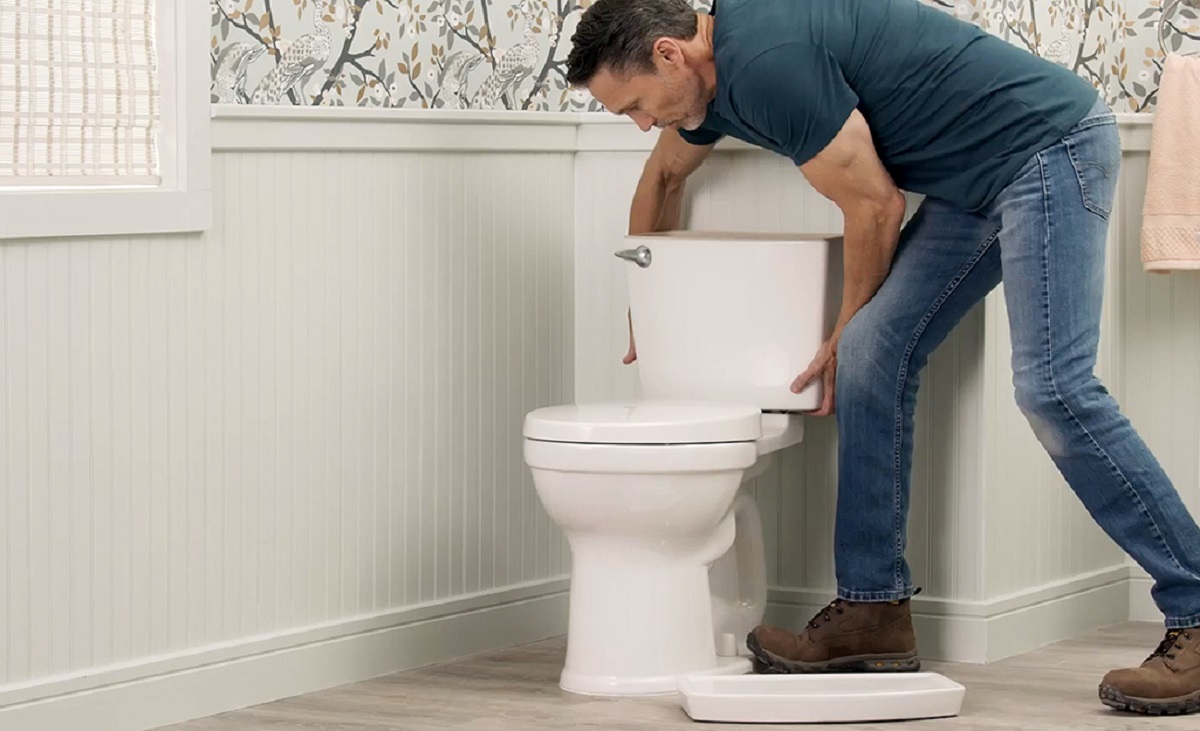
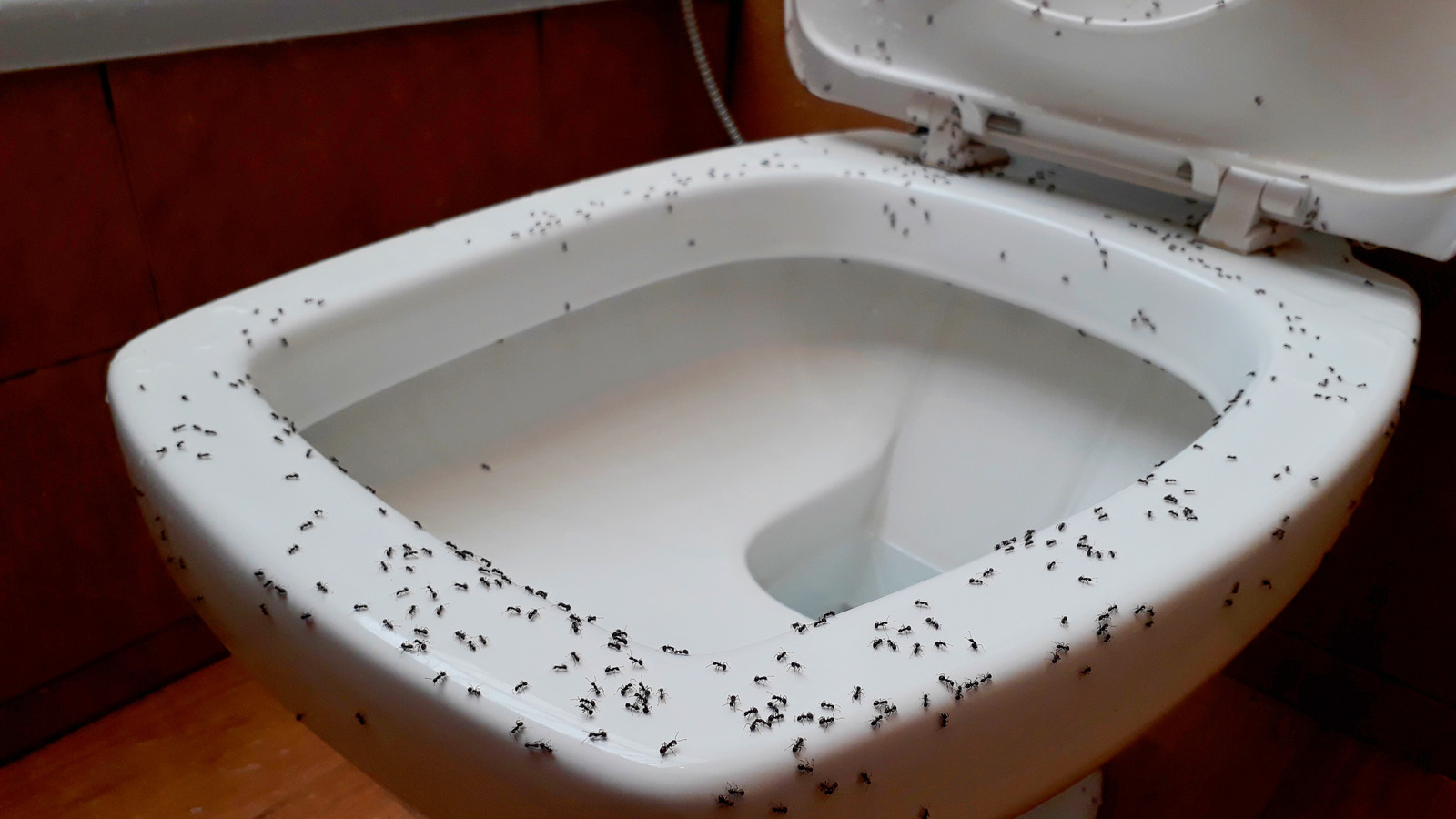
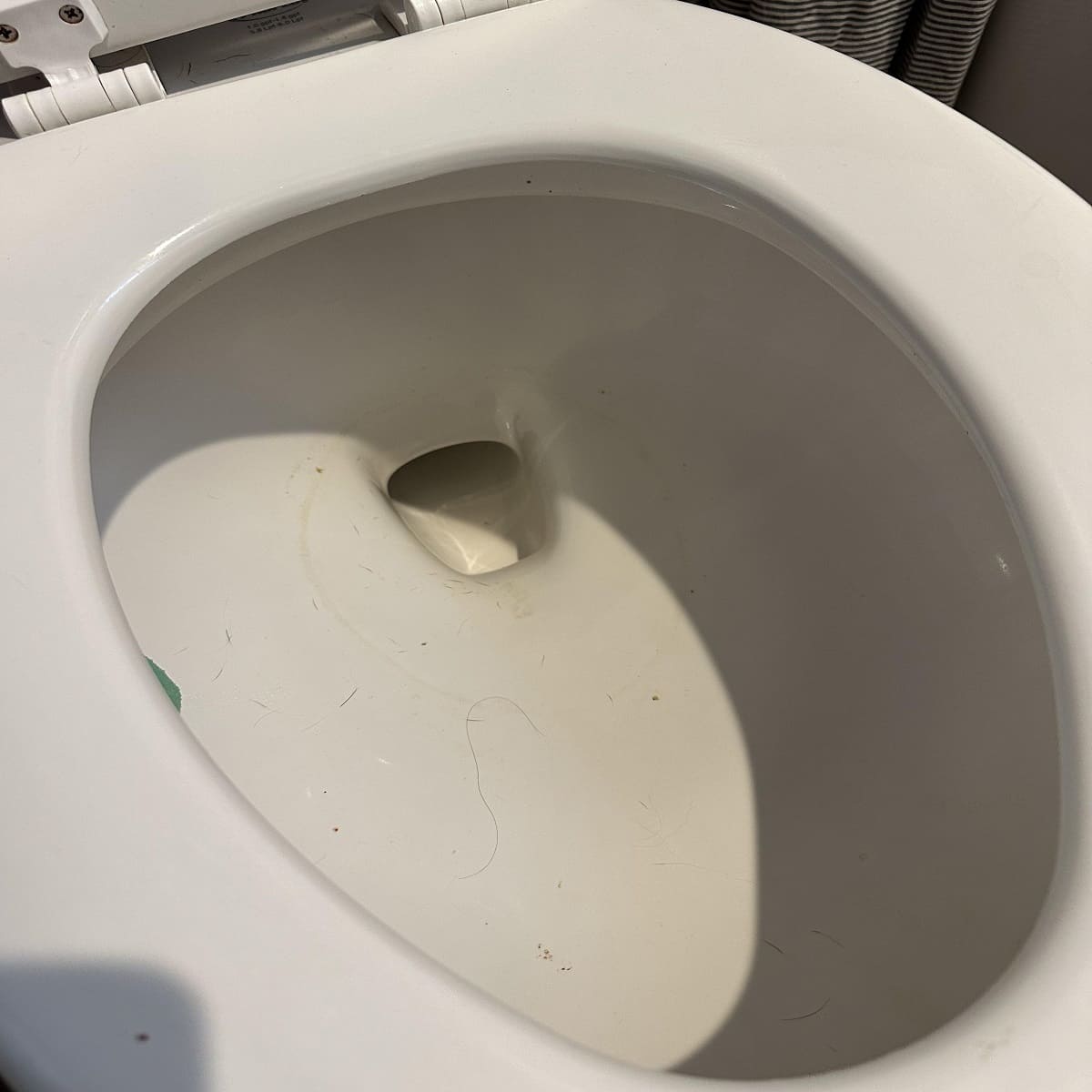
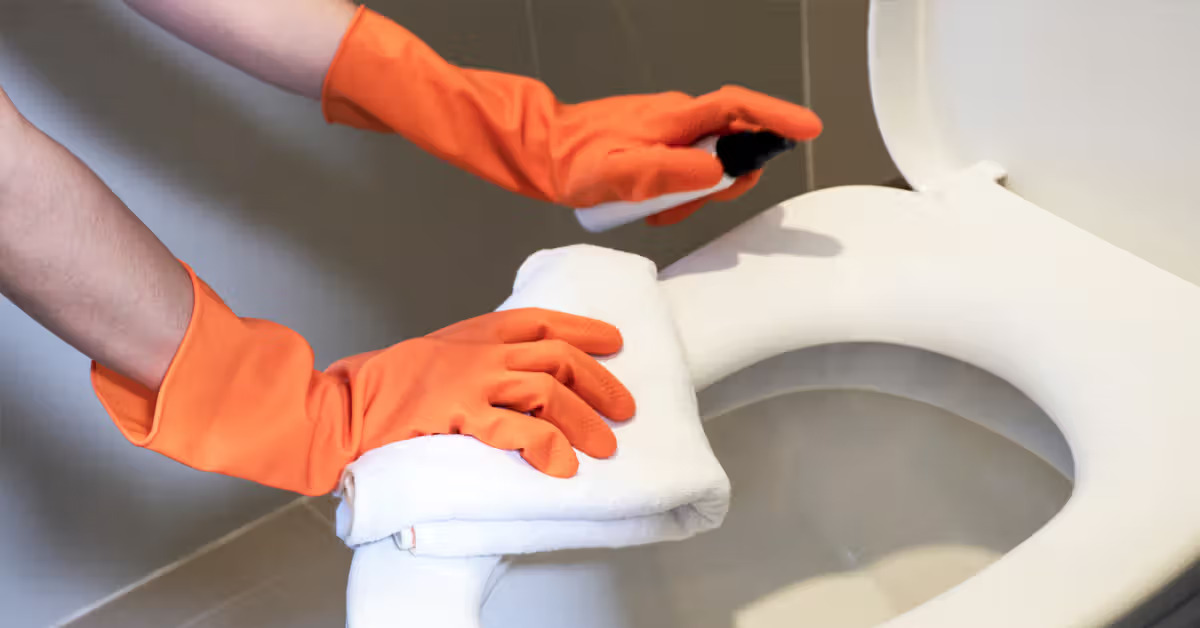
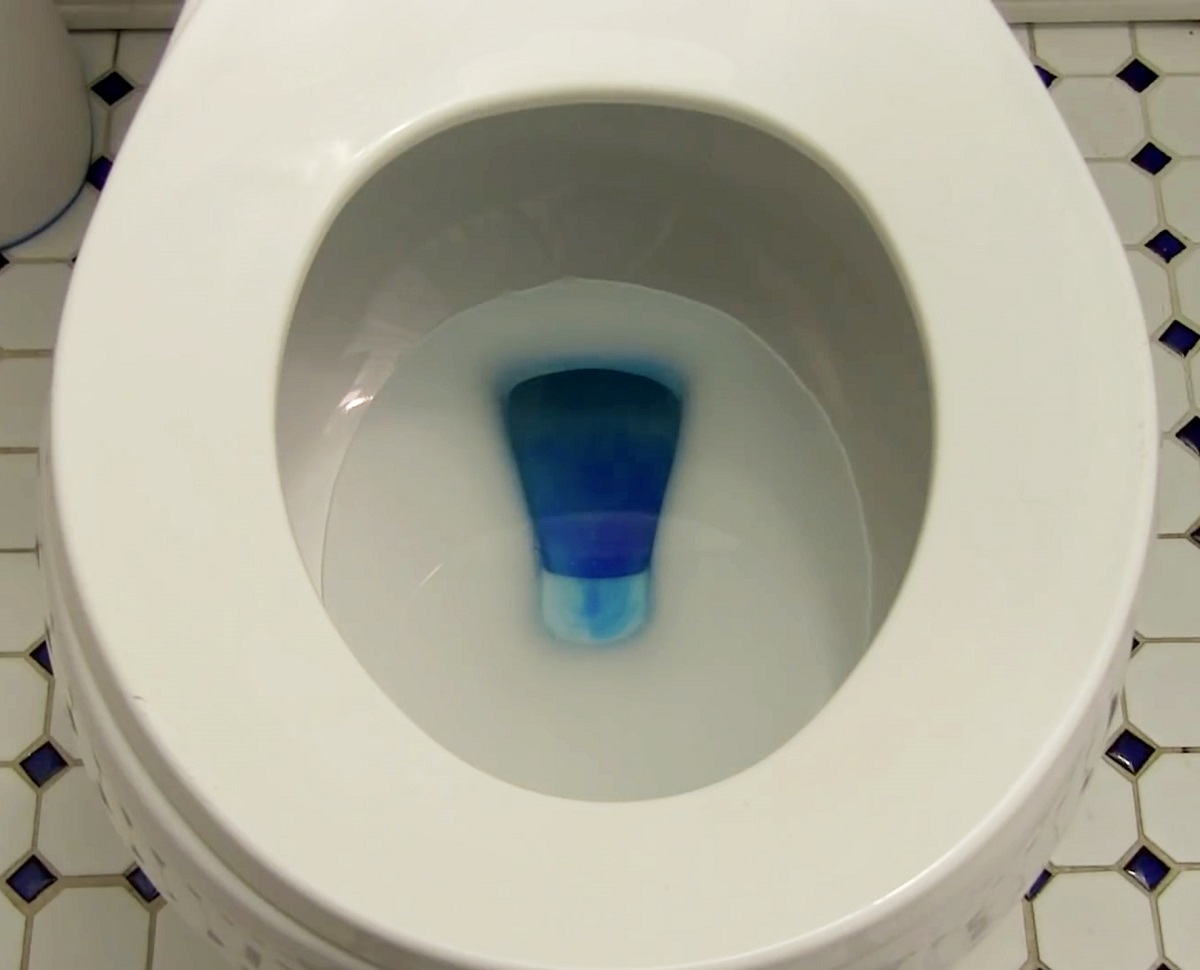

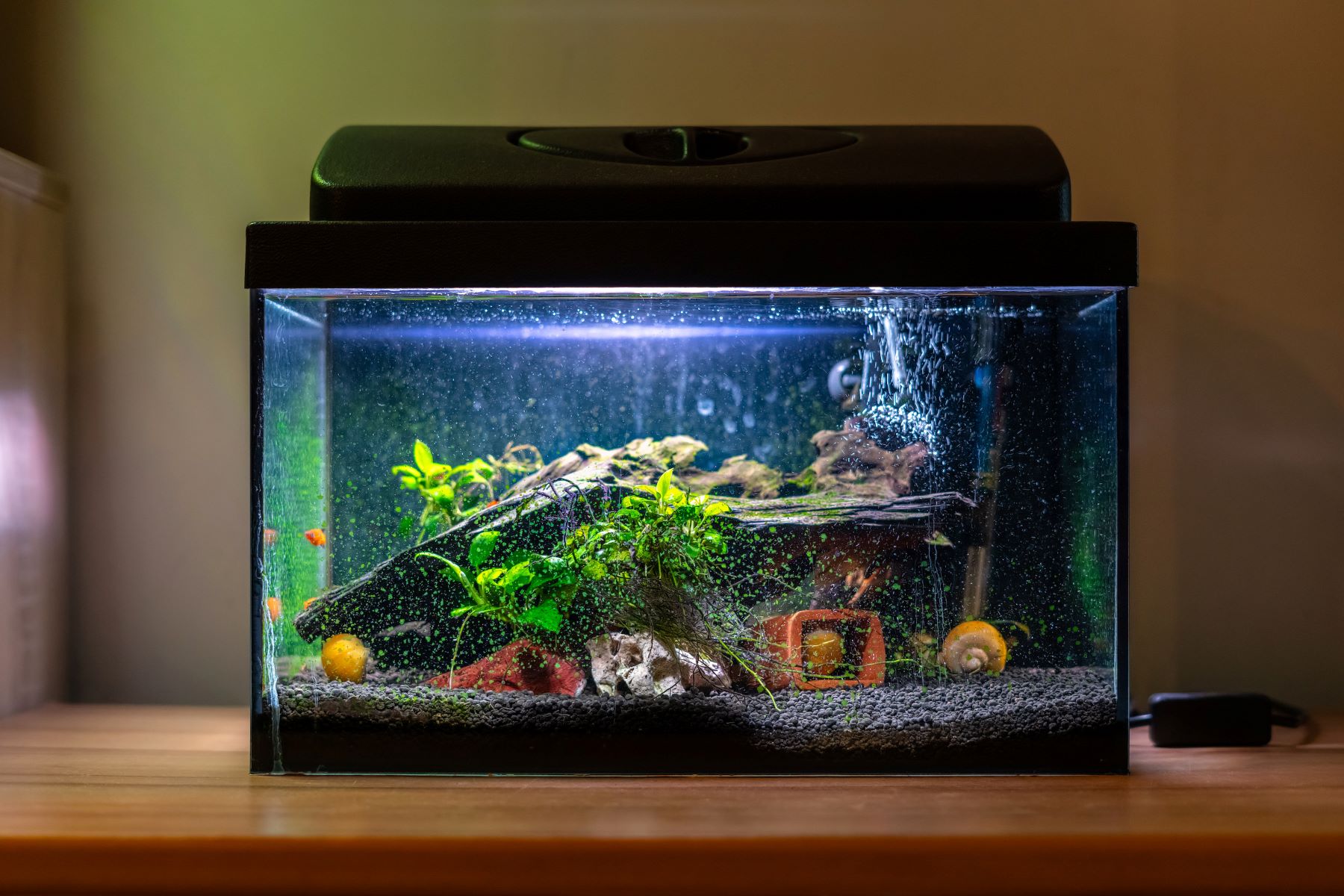
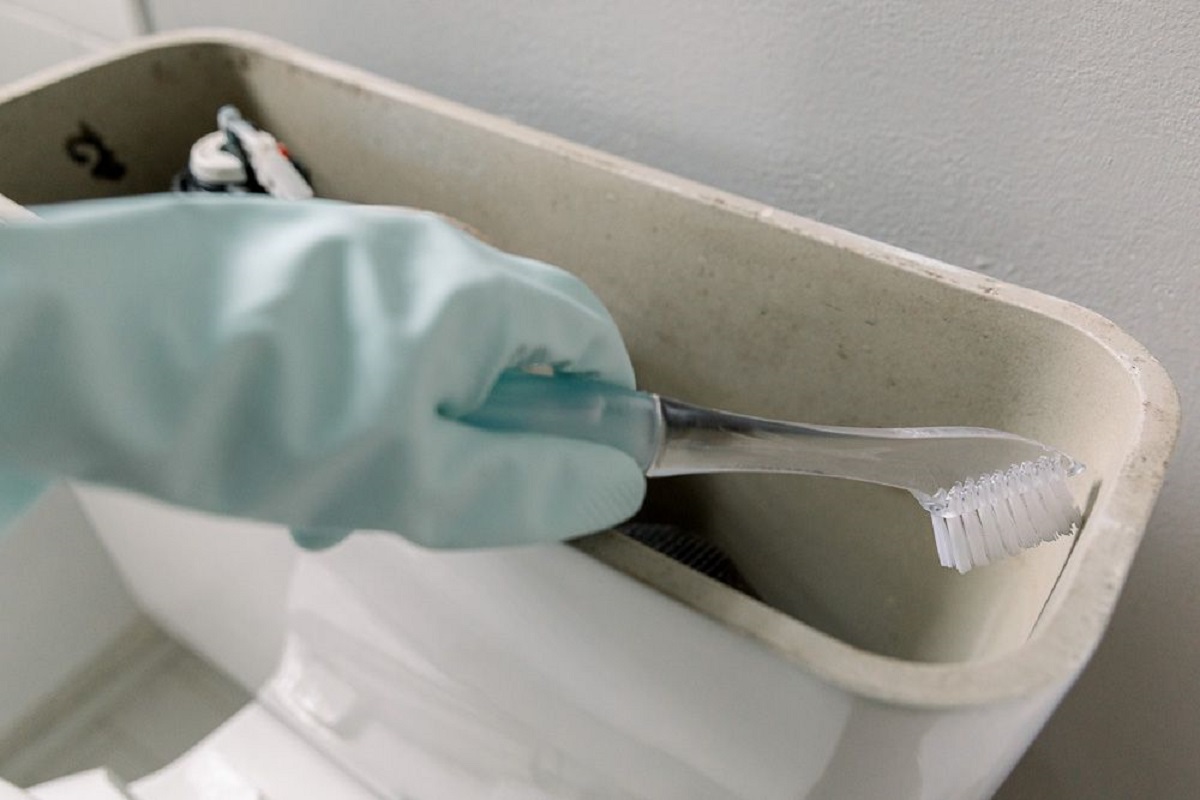
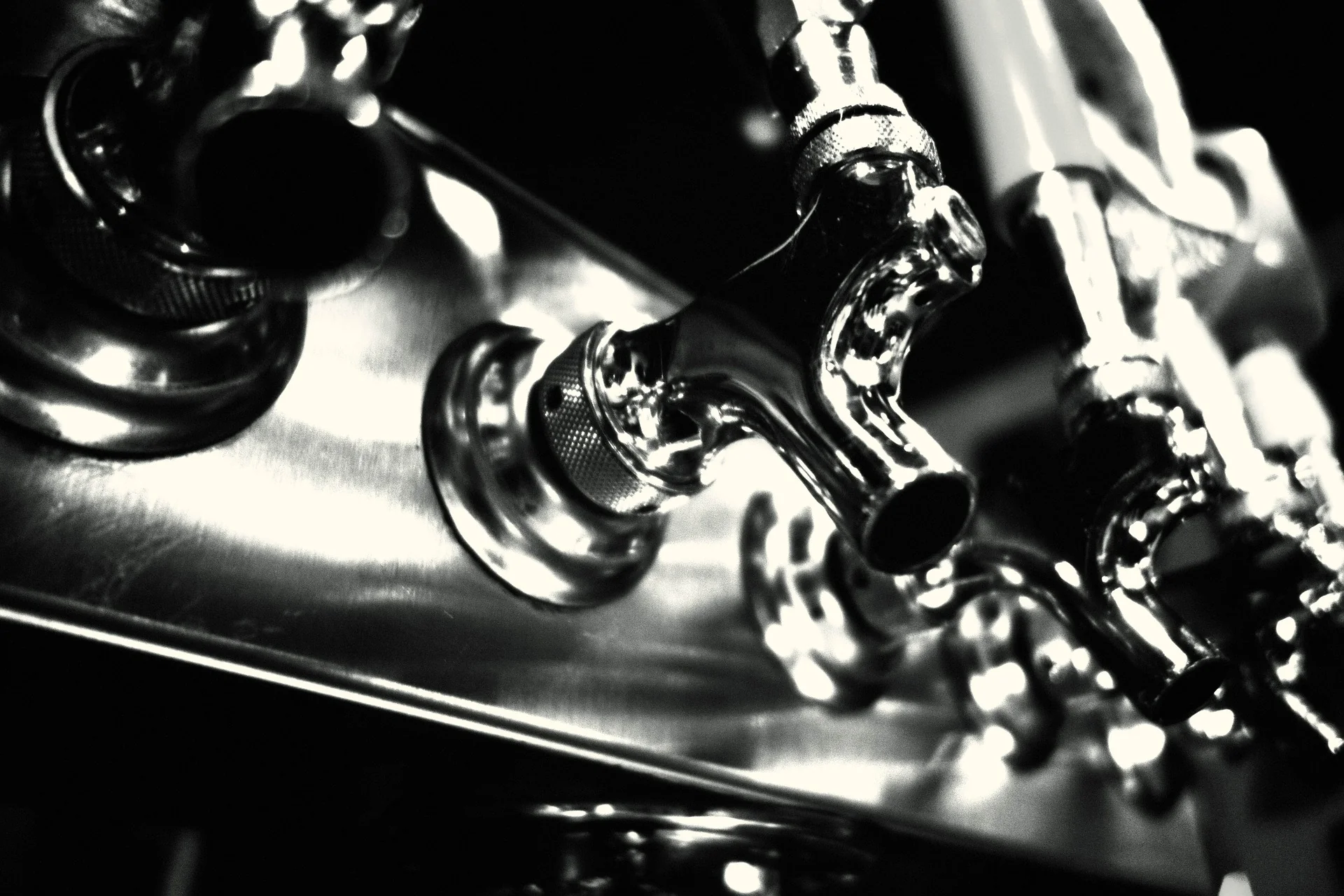
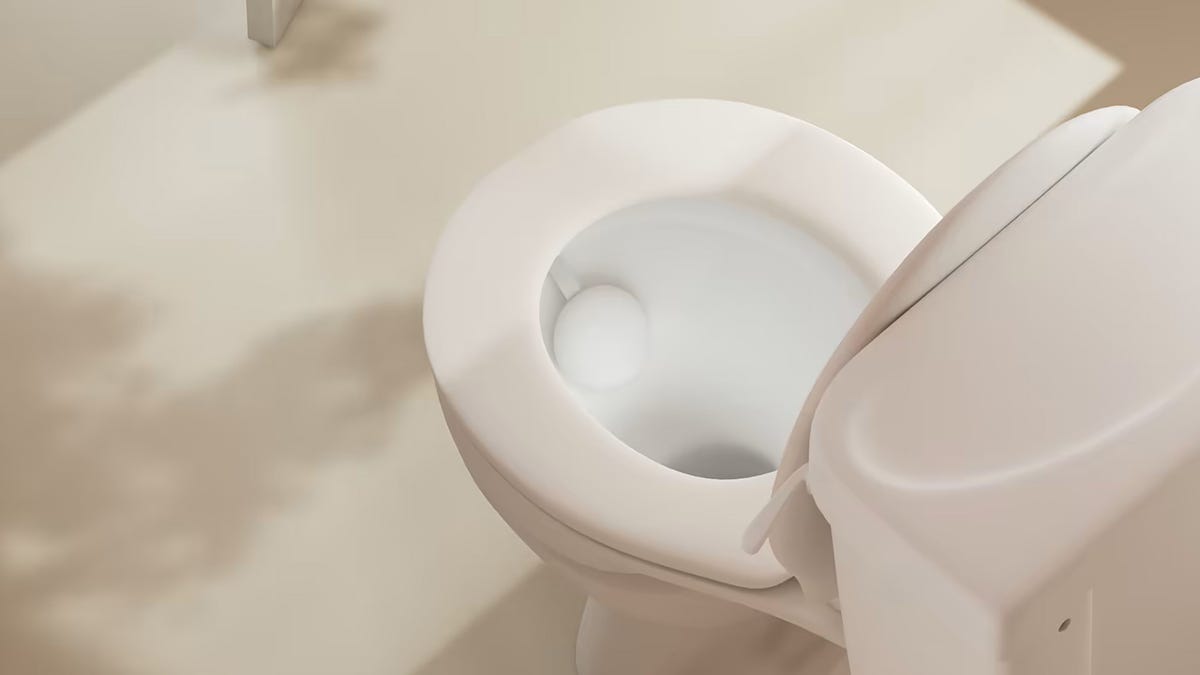
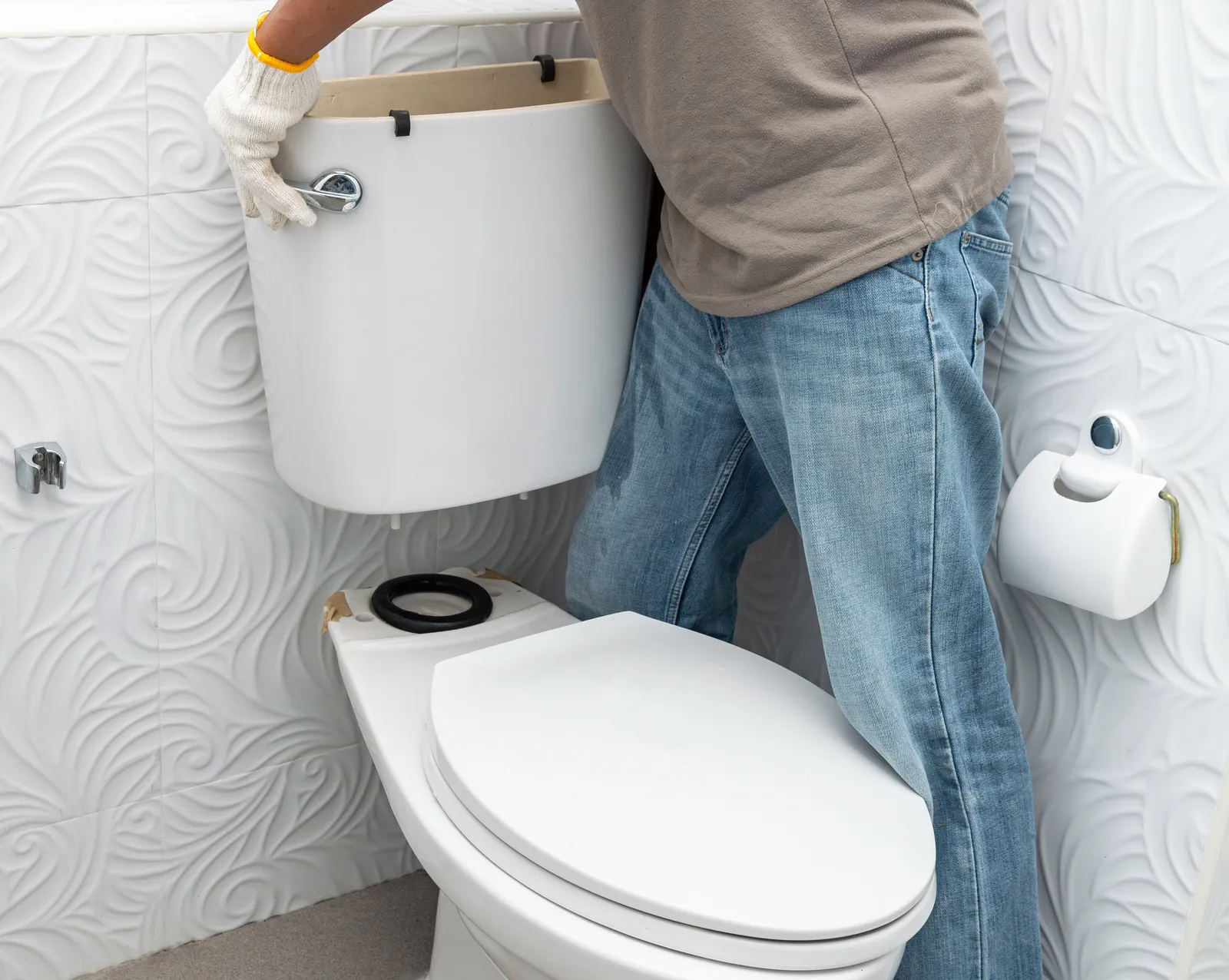

0 thoughts on “Why Is My Toilet Tank Sweating”